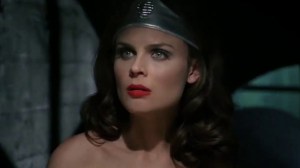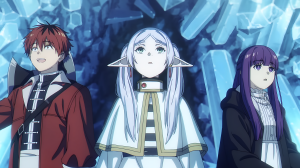The newest Dungeons & Dragons book provides players with an alternative to the outdated “madness” rules found in the Dungeon Master’s Guide. For decades, Dungeons & Dragons and other tabletop roleplaying games have had rules covering “madness,” which is meant to represent a character’s growing detachment from reality due to the horrors they experience throughout a campaign. In recent years, both players and designers have a better understanding on how these rules (which are rooted in how HP Lovecraft his contemporaries viewed fear, stress, and trauma) may present a harmful depiction of those who deal with mental health issues in their games. Too often do we see games treat the cosmic horror of having one’s psychic corrupted by an alien reality as being the same as dealing with the longterm effects of a traumatic and stressful encounter.
Videos by ComicBook.com
To provide players and DMs with more tools to handle the use of fear, stress, and trauma, Dungeons & Dragons has introduced new rules for “Fear and Stress” in Van Richten’s Guide to Ravenloft. These tools are meant to help players embrace roleplaying moments of fears and to help create frightening moments for characters outside of spells and monster abilities.
The “Fear” portion of the ruleset uses Seeds of Fear to help players determine what their characters find truly frightening. The rules suggest that players choose two Seeds of Fear during character creation, with a note that players may gain or lose Seeds of Fear over time as their character grows and experiences new things. Seeds of Fear are meant to guide players during roleplay, and the DM is encouraged to give out inspiration whenever a player reacts to a Seed of Fear in a way that “reinforces” the fear. From a mechanical standpoint, the DM can still call on players to make a Wisdom saving throw to resist being frightened during an encounter, and suggests several triggers that could cause players to make these saving throws. These triggers include experiencing a Seed of Fear, discovering that an enemy is immune to certain spells or attacks, discovering that an enemy has the ability to reduce a character to 0 hit points in one blow, or finding something that defies normal comprehension.
The “Stress” mechanic is a more straightforward alternative to the “Madness” mechanic, which requires a d100 roll to determine what effect a triggering event could have on a player. With this new ruleset, each player has a Stress Score that increases in trying situations and decreases when players take steps to mentally fortify themselves with care or support. A player’s Stress Socre might increase when they face something involving their Seeds of Fear, witness the death of a loved one, watch a nightmare or fear become real, or watch a horrifying transformation in time. When a player has a Stress Score, they substract that score whenever they make an attack roll, ability check, or saving throw – meaning that Stress has a very powerful mechanical effect in the game. The Stress Score can be decreased either through prolonged relaxation or calm, or via use of spells such as calm emotions or lesser restoration.
Like the “Madness” rules in the Dungeon Master’s Guide, these are optional rules that DMs can choose to use in their games. Those who enjoy the traditional concept of “Madness” can continue to use those mechanics, but the new “Fear and Stress” rules provide an alternative for those who feel that “Madness” is a poor reflection of mental trauma but still want to include the longterm fear in their game.
Van Richten’s Guide to Ravenloft will be released on May 18th.








